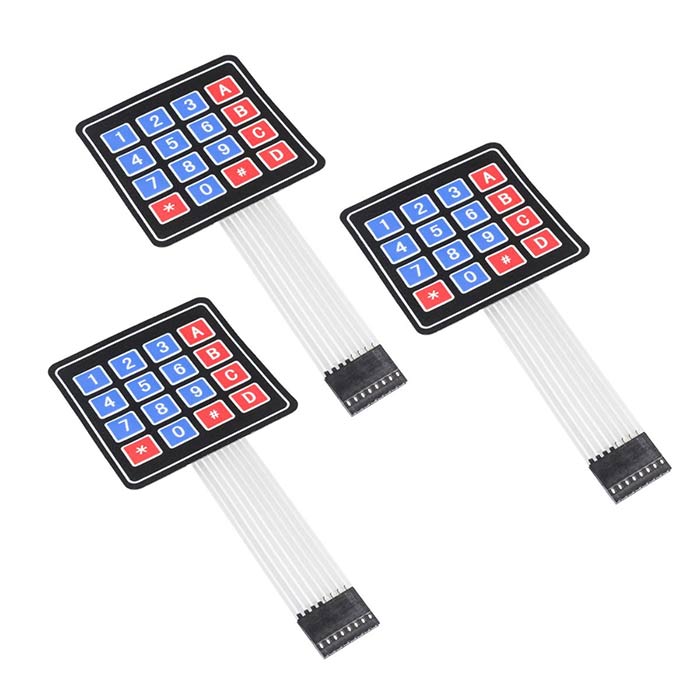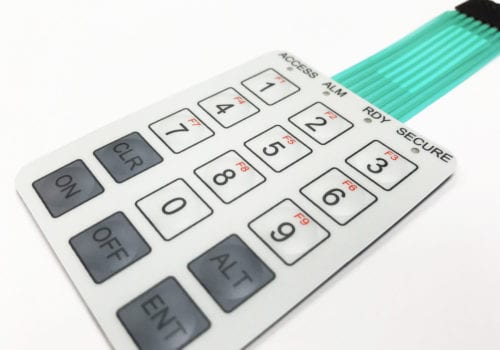Teaming up with an experienced membrane switch manufacturer can simplify your manufacturing process.
Teaming up with an experienced membrane switch manufacturer can simplify your manufacturing process.
Blog Article
Everything About Membrane Layer Switch Over: Comprehending Its Design and Capability
When you think of the control user interfaces in contemporary tools, membrane switches typically enter your mind. These parts are extra than just switches; they mix layout and performance flawlessly. Recognizing how they function and what makes them effective can transform your perspective on day-to-day electronic devices. There are subtleties to their design and efficiency that you may not be mindful of. Allow's explore what sets membrane layer changes aside from other control systems.
What Are Membrane Layer Switches?

Membrane switches can likewise be tailored pertaining to shape, dimension, and graphics, permitting manufacturers to create distinct interfaces tailored to details products. On the whole, membrane layer buttons play a considerable role in enhancing user experience across a vast range of applications.
How Membrane Layer Switches Work
When you press a trick on a membrane layer button, it activates a straightforward yet reliable system. membrane switch manufacturer. The top layer, typically made of adaptable product, presses down onto a conductive layer below it.
You'll see that the tactile feedback differs based on the switch layout, using either a soft click or a more obvious reaction. As soon as you release the key, the membrane returns to its original position, resuming the circuit and stopping the signal. This process occurs nearly instantaneously, ensuring a receptive user experience.
Membrane layer switches are preferred because of their sturdiness and resistance to dirt and wetness, making them suitable for various applications, from family devices to clinical devices. Understanding this operation aids you value their widespread use.
Key Components of Membrane Layer Buttons
Comprehending the vital components of membrane layer buttons is basic for understanding their functionality and layout. At the core, you'll discover the visuals overlay, which supplies the aesthetic user interface for individuals. Beneath that, there's a spacer layer that separates the circuit layers, making certain that they don't make call till pressed. The circuit layer is where the magic happens; it consists of conductive traces that finish the circuit when you press the button. An additional important component is the adhesive support, permitting the button to comply with surfaces securely. The protective layer guards versus ecological elements and use, prolonging the switch's life-span. Each component plays a considerable role in guaranteeing dependable efficiency and customer interaction. By comprehending these components, you'll gain understanding into exactly how membrane switches operate and their importance in numerous applications.
Materials Used in Membrane Change Design
The efficiency and durability of membrane changes heavily depend on the products used in their style. You commonly come across polyester and polycarbonate as primary substratums as a result of their superb stamina and flexibility. These materials resist scrapes and chemicals, making them ideal for demanding atmospheres.
The conductive layers often make use of silver or carbon, selected for their dependability and conductivity. membrane switch manufacturer. Silver supplies exceptional performance, while carbon is an affordable option. For the overlay, you may think about a matte or shiny coating, depending upon your visual demands and user experience
Make specific to pick adhesives that hold up against environmental aspects like temperature and humidity. Picking the ideal products will certainly guarantee your membrane switch stands the test of time.
Layout Factors To Consider for Membrane Layer Buttons
While designing membrane layer switches, it's essential to take into account various variables that affect their performance and individual experience. Start by focusing on the layout and button dimension; make particular they're instinctive and simple to navigate.
Do not neglect the graphic design; clear labeling and color contrast are try these out substantial for presence. Verify your style suits environmental aspects, like dampness or temperature level variations, which could affect efficiency. Ultimately, remember the significance of testing models with genuine users to collect responses and make necessary modifications. This iterative procedure assists you refine the design, validating it satisfies both practical and visual needs effectively. By thoroughly considering these elements, you'll produce a membrane switch that improves usability and contentment.
Applications of Membrane Buttons
Membrane switches are flexible elements located in numerous applications, from industrial devices to customer electronics. You'll see their impact in devices that call for long lasting user interfaces and in devices that gain from streamlined layouts. Understanding these applications helps you value the functionality and usefulness of membrane buttons in day-to-day innovation.
Industrial Equipment Use
When you're looking to enhance the capability of commercial equipment, membrane buttons use a trustworthy option that incorporates durability with easy to use layout. These switches are ideal for harsh environments, offering resistance to dust, wetness, and chemicals. Welcome membrane layer buttons to streamline your procedures and enhance total efficiency.
Consumer Electronic Devices Integration
In the domain of consumer electronic devices, membrane switches play an important function in improving customer communication and tool functionality. You'll find them in tools like microwaves, push-button controls, and video gaming consoles, supplying a smooth means to interact with technology. Their smooth style permits simple integration right into numerous products, making controls intuitive and easy to use. With their capability to integrate graphics and backlighting, you see here now can take pleasure in a modern-day visual that matches the device's general appearance. Membrane buttons additionally guarantee longevity and resistance to dirt and dampness, prolonging the life home expectancy of your electronic devices. By choosing membrane layer buttons, you improve not simply the capability but also the style of your gadgets, making day-to-day communications smooth and pleasurable.
Advantages and Disadvantages of Membrane Layer Buttons
While membrane buttons offer a variety of benefits, they also come with some disadvantages that you should think about. One substantial benefit is their compact layout, making them suitable for space-constrained applications. They're additionally cost-effective, supplying a sturdy service with a low production expense. On top of that, their smooth surface is simple to tidy, enhancing health in environments like health centers.

However, there are negative aspects. Membrane buttons can have a shorter lifespan contrasted to mechanical switches, specifically under heavy usage. They can likewise be much less tactile, which could impact individual responses during operation. If damaged, fixing them can be difficult and usually requires complete replacement. Eventually, their level of sensitivity to severe temperatures and environmental problems may restrict their effectiveness in certain settings. Stabilizing these pros and cons will certainly aid you identify if membrane layer buttons are the right suitable for your project.
Frequently Asked Inquiries
Exactly How Long Do Membrane Changes Typically Last?
Membrane changes normally last between 5 to ten years, relying on usage and ecological conditions. You'll intend to examine aspects like wear, direct exposure to dampness, and temperature variations to determine their longevity successfully.
Can Membrane Switches Over Be Customized for Particular Designs?
Yes, you can customize membrane buttons to fit details styles (membrane switch manufacturer). You'll have the liberty to choose colors, forms, and formats that match your project's requirements, guaranteeing they blend perfectly with your general aesthetic
What Is the Cost Array for Membrane Layer Switch Over Manufacturing?
The expense range for membrane layer switch production usually falls in between $1 and $10 per unit, depending on elements like design complexity, amount, and materials. You can obtain quotes from suppliers to discover the very best alternative.

Are Membrane Layer Switches Over Water-proof or Immune?
Membrane layer switches can be made to be water-proof or immune, depending upon materials utilized and building and construction methods. If you need them for damp environments, guarantee you specify those demands throughout the design process.
How Do Membrane Changes Compare to Typical Buttons?
Membrane switches are usually thinner and a lot more adaptable than conventional buttons, providing a streamlined design. They're usually much easier to clean up and incorporate, but may not provide the responsive comments you're made use of to with mechanical options.
Conclusion

Report this page